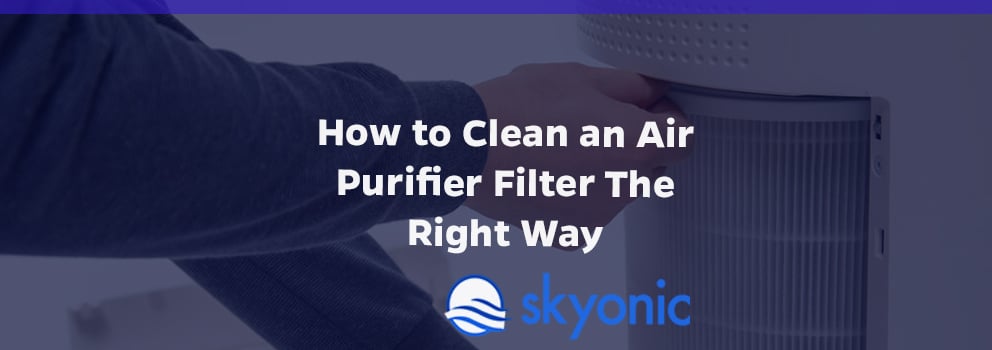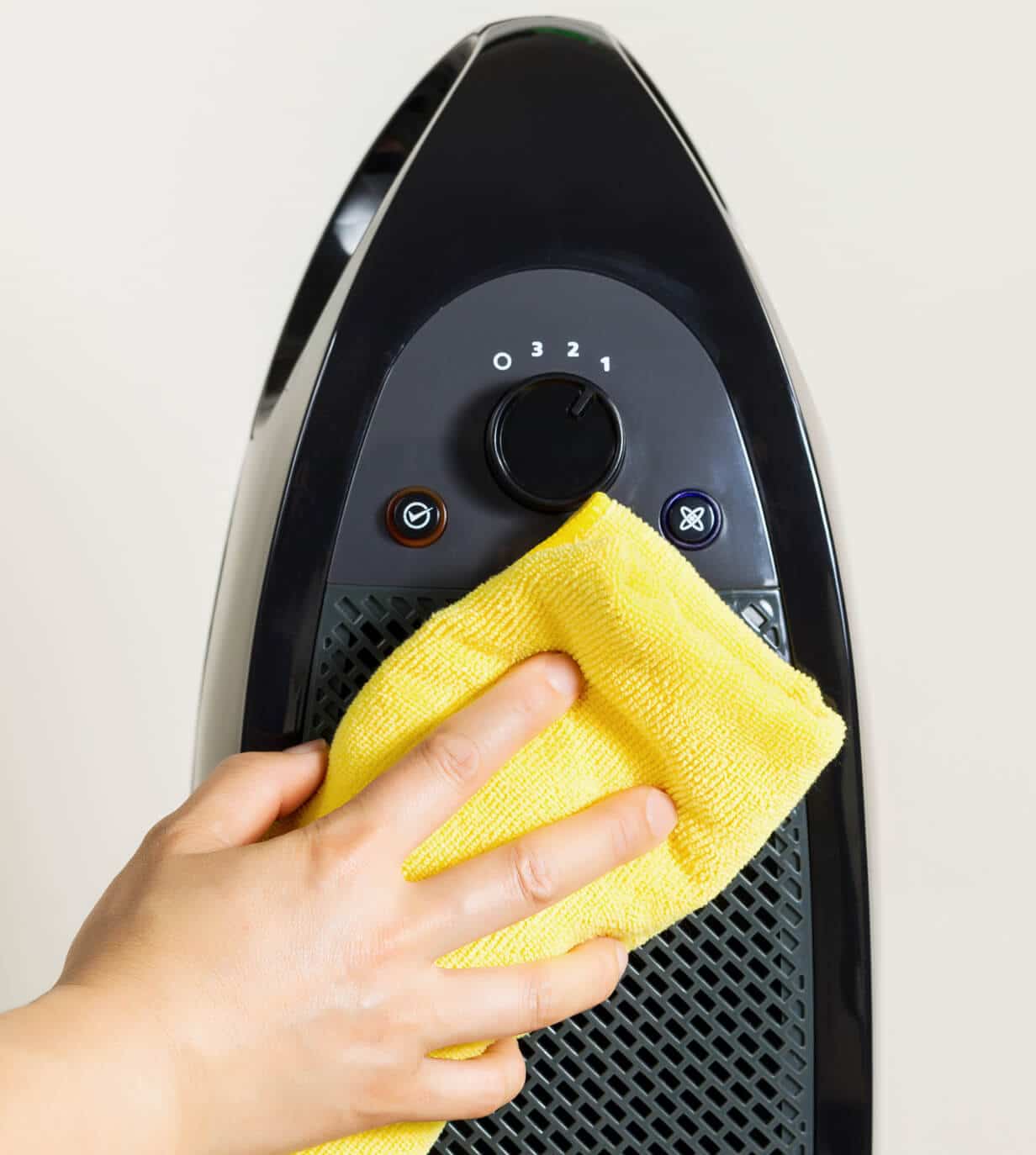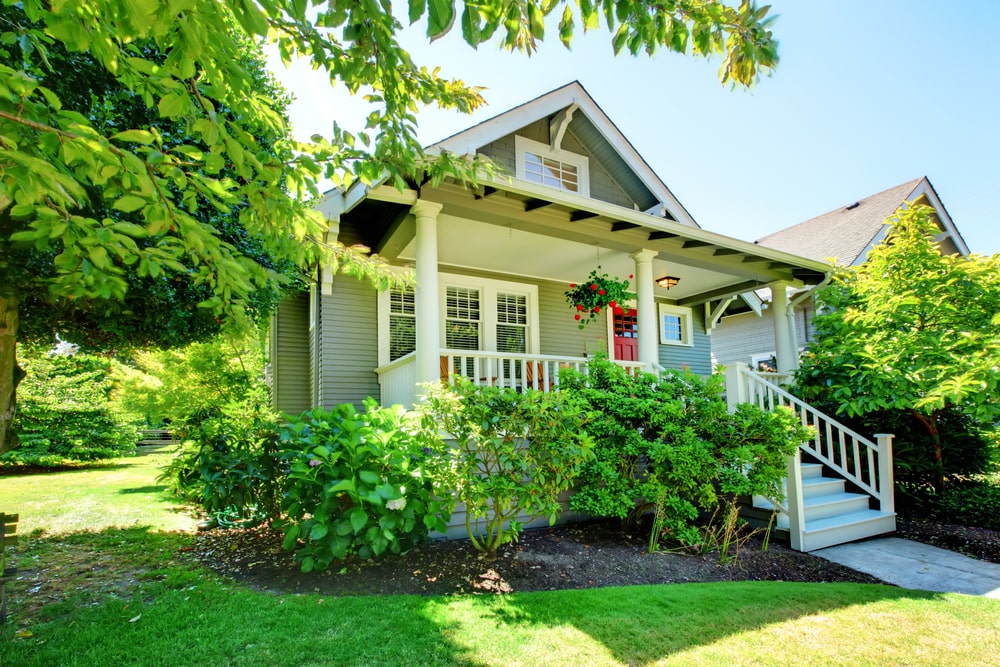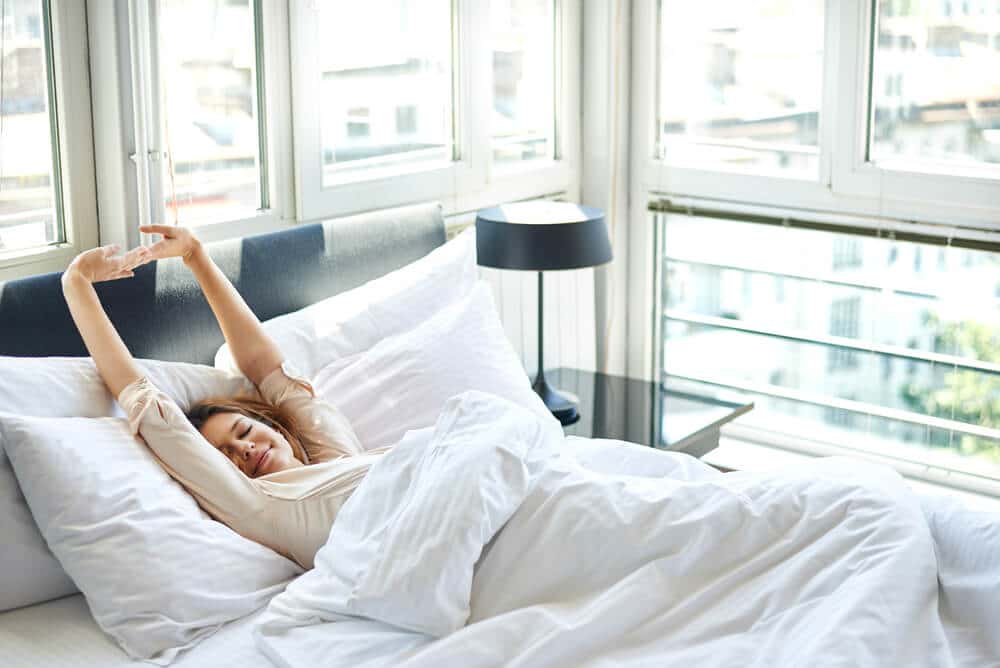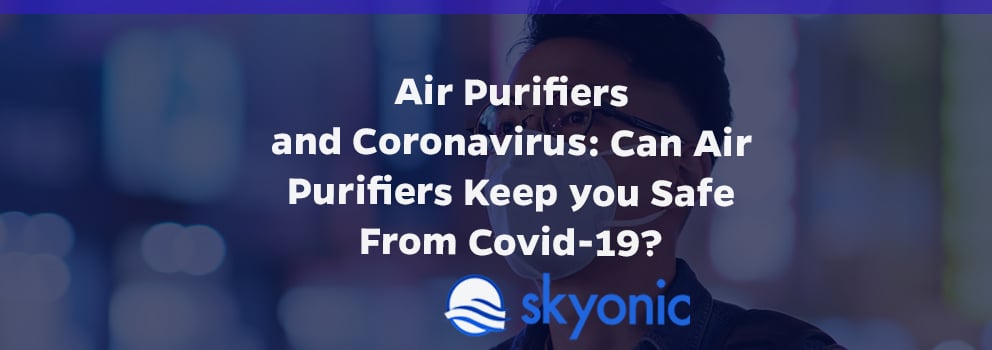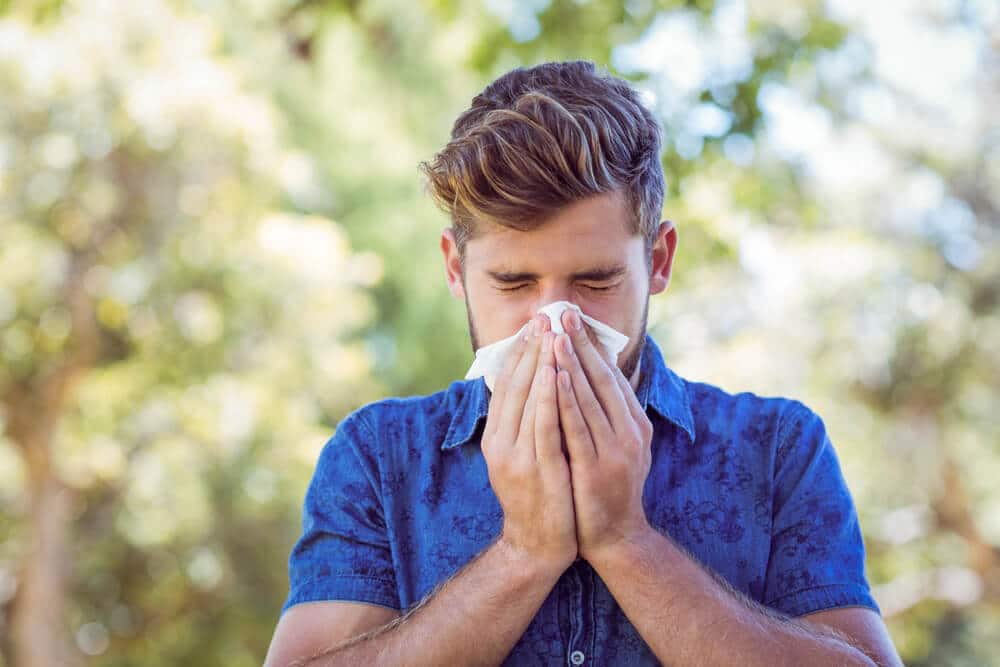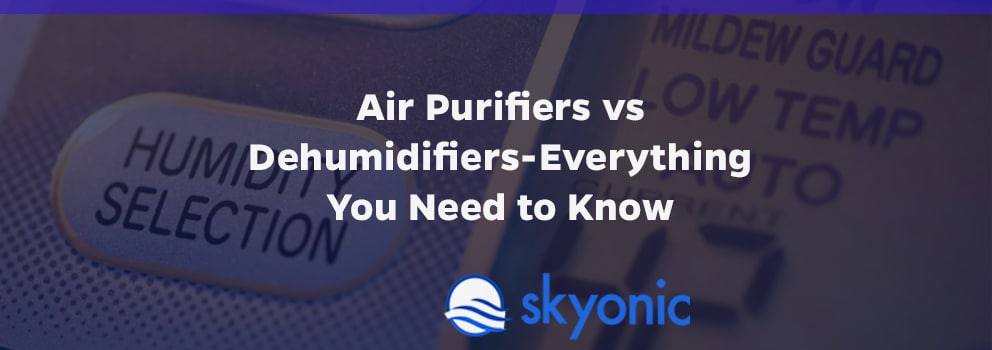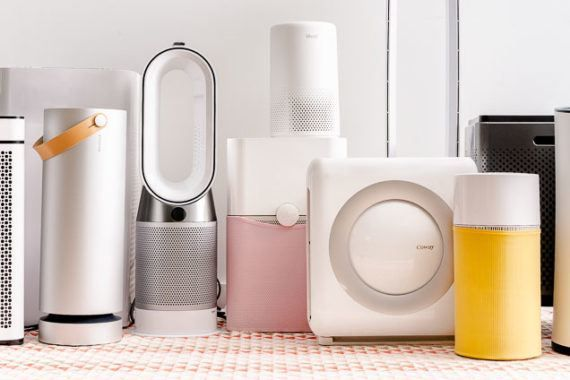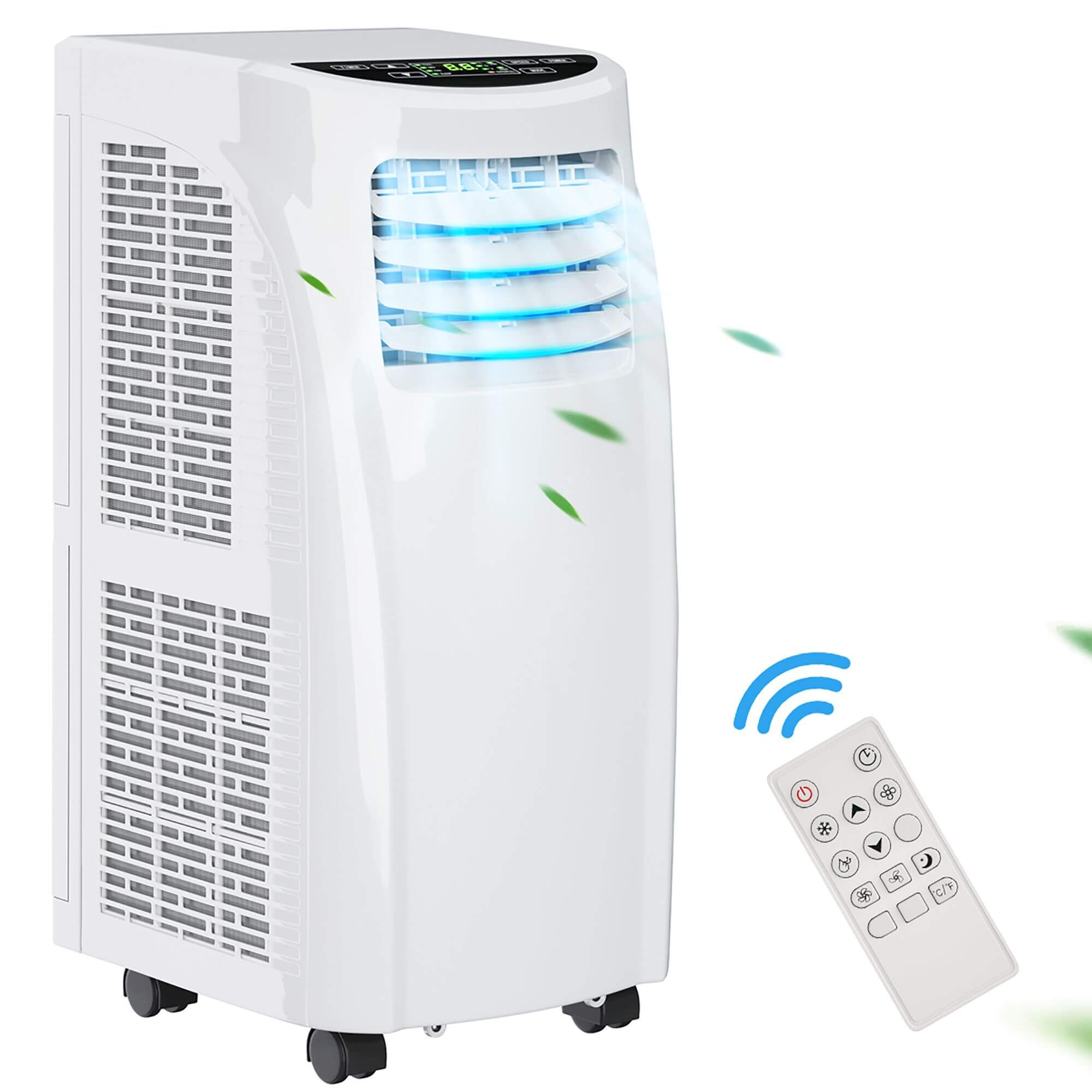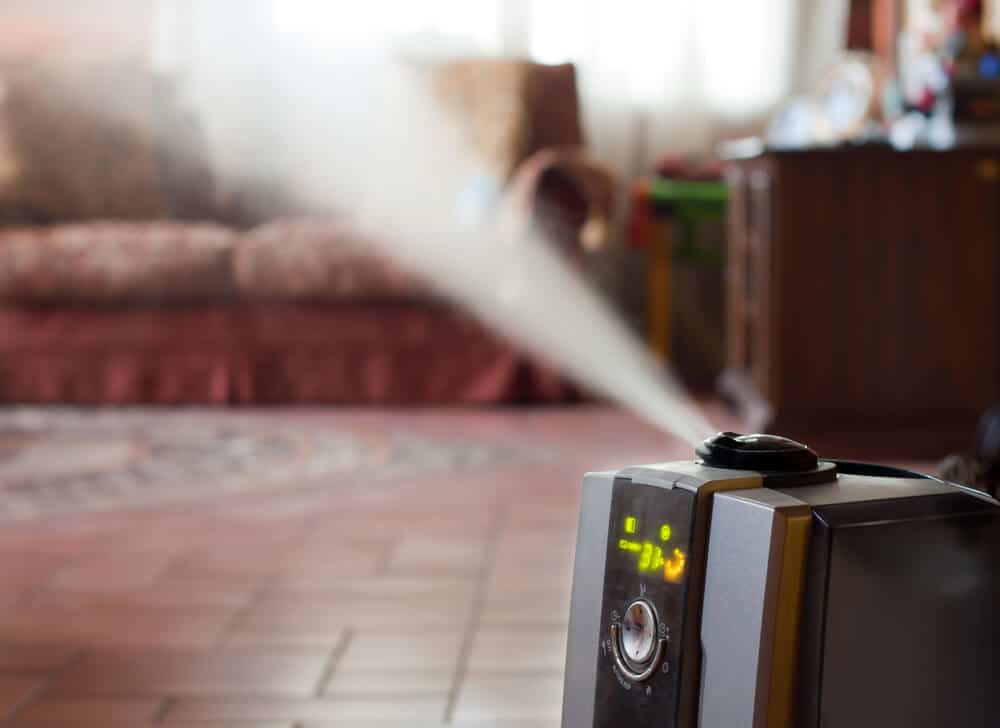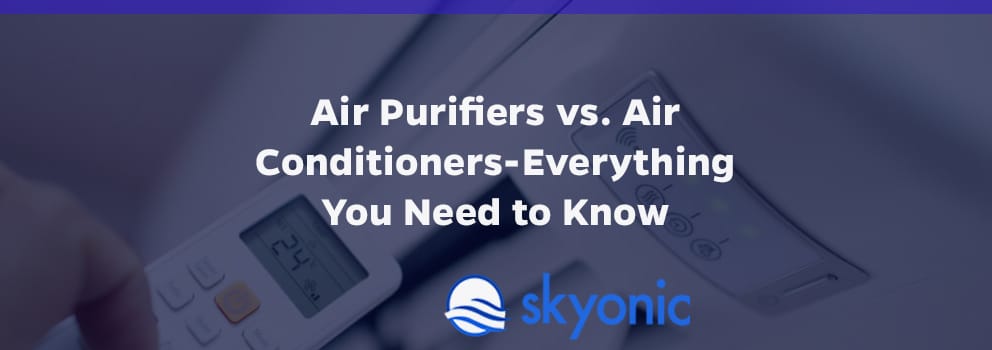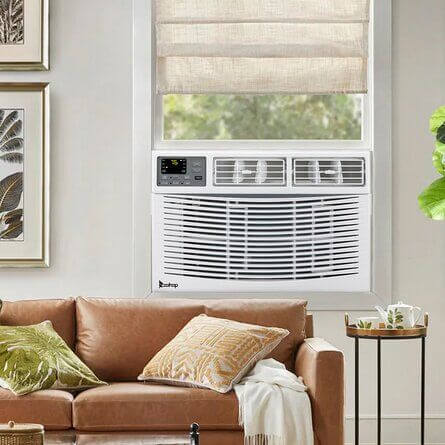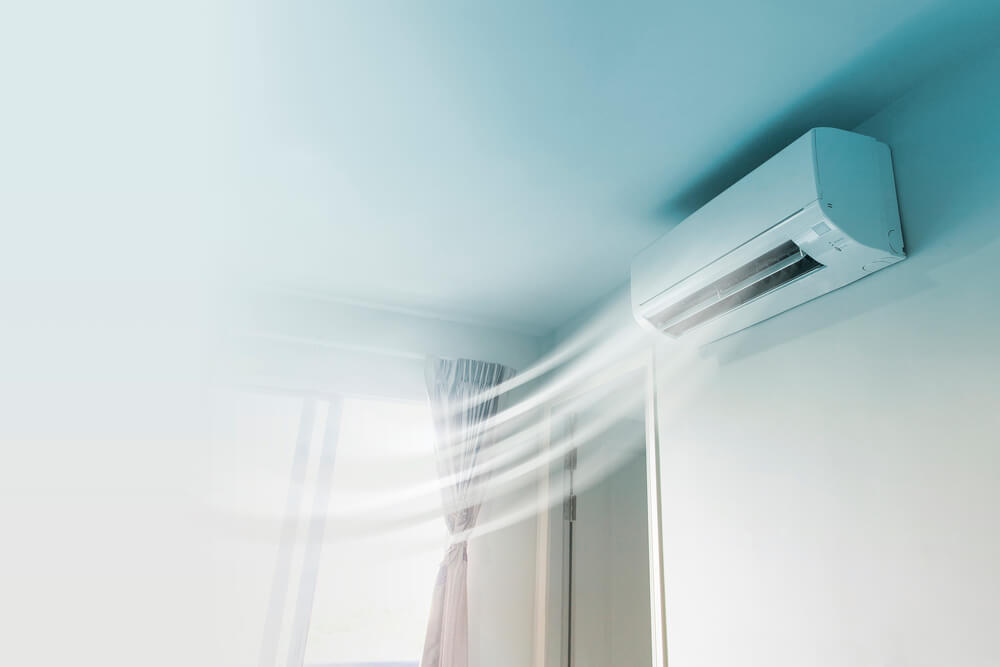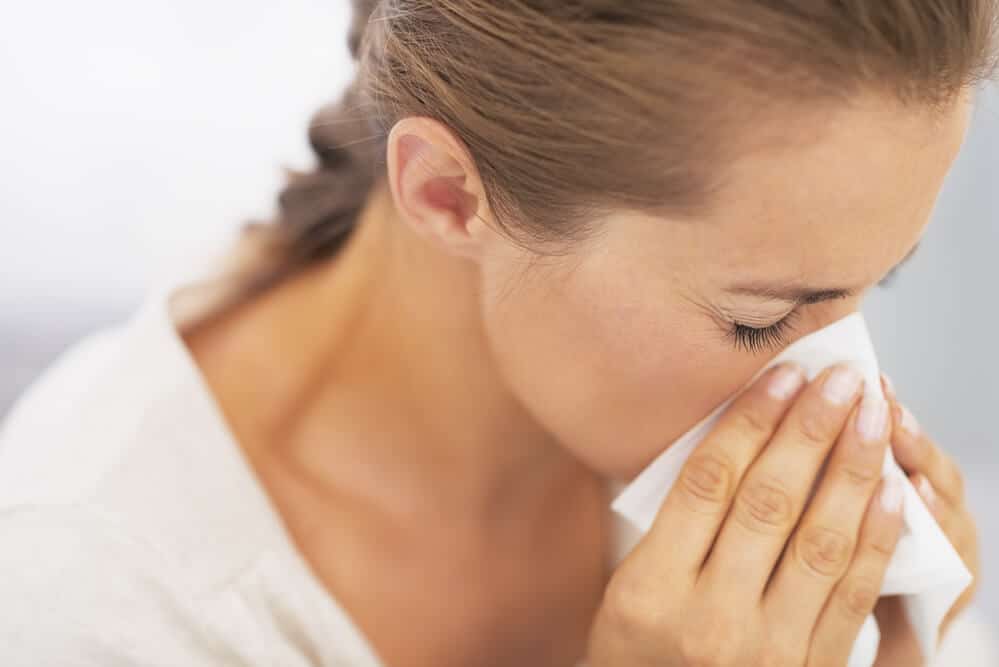Unless treated, the indoor air many of us breathe is far from pure. In fact, most people would be quite horrified to know exactly how many pollutants and impurities there are around them. When it comes to improving the indoor air quality we come into contact with every day another important factor is the humidity in the air.
The ideal solution for both of these problems is getting the best air purifier and humidifier combination.
In this guide we take a look at how to find the best solution for your needs and take you through the details of some of the leading options available. In turn we hope this will allow you to make an informed decision for better air quality and optimal humidity.
What to Consider Before Buying an Air Purifier Humidifier Combo
There are many benefits to buying an air purifier and humidifier combination appliance. They are both important for good indoor air quality and will clean the air and keep the humidity at healthy levels throughout the year. A combination device will save space and save you some money. Why buy two separate devices when one can do both functions? Some even have additional features adding even more value.
A quality air purifier should remove most of the dust, pollen, allergens, germs, pet dander, dust mites and other pollutants from the air. This will help to reduce allergy symptoms and create a healthier environment. Many of them are also effective at removing bad odors. Some also allow you to add essential oils that smell great and have a range of benefits.
When looking for the ideal model, there are a number of important factors to consider:
- Efficiency
The efficiency relates to how well the unit cleans the air and removes impurities as well as the performance of the humidifier. Some are designed to work in small rooms while others are able to work well in large rooms or bigger areas. It is important to understand the coverage of the air purifier to ensure that it will be suitable for the area you intend to use it in.
The technology used will determine the amount of pollutants the device will remove from the air and the size of the particles it is effective on. Some work faster than others and checking the energy star and CADR certificated ratings for any chosen device is important.
- Filter system
There are different types of filters available and some use alternative types of technology to clean the air without the use of a filter. A true HEPA filter is one of the most popular options and is extremely efficient. Electrostatic and activated carbon filters are also popular while an ionizer is another way of purifying the air. Often, a range of replacement filters are used together to maximize efficiency.
UV sanitizers are another option that work well with air filters. The UV light helps to get rid of bacteria and viruses. It is also important to note that some filters are more effective at eliminating odors than others. If this is important, look for one that does the job well and consider how often you will need to invest in a filter replacement.
- Size and looks
While the purifier and humidifier is not a feature of the room you don’t want it to be an eyesore. Look for one that is relatively compact and fits in with the style and size of the room it will be used in. Most combo appliances have a modern sleek look while others are more conservative. Pick a style that suits your tastes and the look of the environment.
- Noise
Noisey household appliances can be irritating so you ideally want a device that makes as little noise as possible. This is especially important if the air purifier is used to be used in a bedroom. Many of the devices we reviewed have a sleep mode which is extremely quiet. Some also allow for the lights to be dimmed or turned off at night for an even better sleeping experience.
- Ease of use and maintenance
Look for an air purifier and humidifier that is user-friendly and does not require maintenance. Sure they all require that you top up the water and clean them from time to time but some make this a lot easier than others.
- Consider ongoing costs
The initial purchase price is not the entire cost as most will require that you replace the filter or filters at some point. With some models, this can work out to be a significant cost while others are extremely affordable.
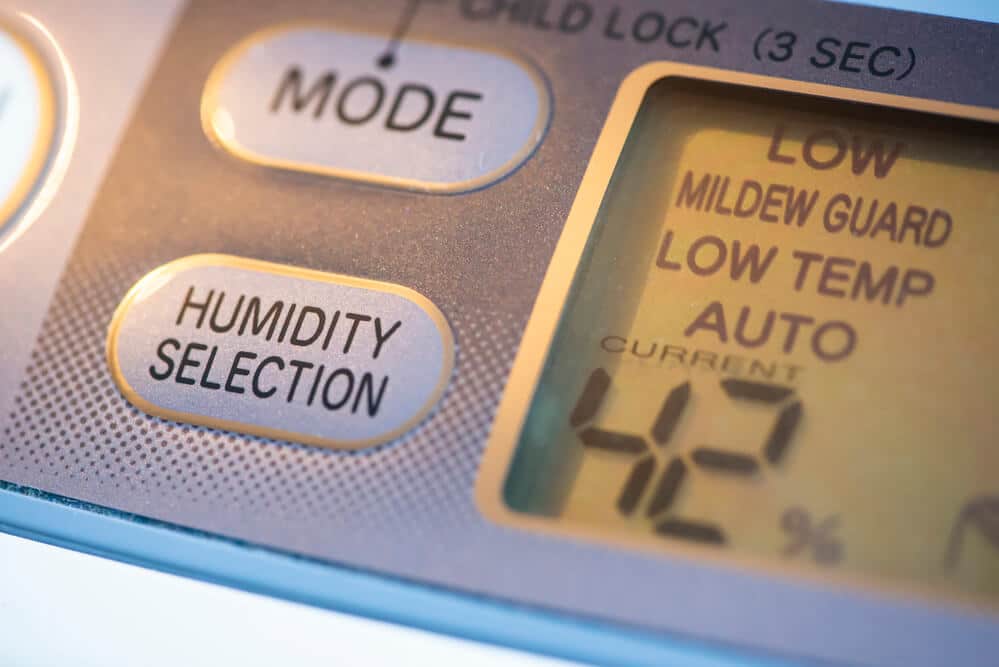
Reviews of the Best Air Purifier Humidifier Combo Systems
BONECO – Air Washer W200 Humidifier & Purifier
This stylish and elegant two in one unit will give you clean healthy air while humidifying the air at the same time. It has a rotating evaporator mat that delivers the optimal humidify while the water it passes through also removes dust, pollen, and other contaminants in the air. This is a safe, natural, and effective way to clean the air.
It has a day or night mode. Day mode will allow it to work hard to achieve healthy air and night mode will quietly maintain the air condition for a peaceful sleep. The W200 is energy efficient and uses very little power to do its job. For safety, it will automatically switch off when the water tank is empty and will alert you when a refill is required.
The W200 is manufactured in Switzerland and is well made from quality materials. It is built to last. It will be effective in rooms up to around 550 square feet. It is easy to fill the water reservoir and the settings and controls are user-friendly. The unit is easy to clean although this does need to be done frequently. One can also add essential oils in the built-in fragrance container. There are many oils with a wide range of added benefits. They will also give the room a pleasant smell.
This is a popular option from Boneco and many people like the natural operation and the effectiveness of the W200. It is great for those that suffer from allergies and those that want clean air with the right humidity.
Pros:
- Natural water-based air purifier and humidifier
- Day and night mode for optimal air conditions
- Low energy consumption
- Empty water tank shut off feature
- Compact unit
- Attractive modern design
- Durable and reliable
- Dedicated essential oil container
Cons:
- Needs to be cleaned regularly
- The humidifier takes a while to work
- Somewhat expensive
Dreval D-950 Air Purifier and Humidifier
DrevalAir is a USA based company that has been making quality air filtration systems and related technology for more than 15 years. The D-950s is a highly effective and hard-working combination humidifier and air purifier. It uses an impressive 5 filter system to ensure maximum performance and ensure clean healthy indoor air with minimal odor.
The air purifier uses a range of technologies for outstanding air cleaning results. The true HEPA filter works together with a cold catalyst filter and a Negative Ion generator. There is also a carbon filter as well as an antimicrobial filter. Not much can get past that formidable combination. It will work well on 99.9% of pollutants in the air while eradicating odors. The odor sensor actively monitors odors and pollutants in the air and can automatically adjust the fan speed accordingly.
The air quality is displayed by LED lights allowing you to see the quality at a glance. Green indicates that the air is good, orange is normal, and red indicates that it is poor quality. The D-950 also features a UV Sterilization Lamp. This will work on certain odors while also killing microorganisms. While cleaning the air the ultrasonic humidifier will keep the humidity at optimal levels.
Controlling the unit manually is a breeze. The controls are simple and user-friendly allowing you to get the ideal settings for the environment. There is an extremely quiet sleep mode but some may find it a bit noisy on higher settings. There is also a mist mode and a UV sterilizer mode.
It has a compact design that is stylish and elegant. This air purifier and humidifier will work well in many areas of the home or office. It will rid the air of odors, smoke, dust, germs, viruses, bacteria, allergens, pet dander, and a range of other airborne impurities.
Pros:
- 5 Filter system for maximum air cleaning
- Highly effective on odors
- Odor and pollutant detector adjusts fan speed automatically
- LED air quality display
- Ultrasonic humidifier
- UV Sterilization Lamp
Cons:
- Can be a bit loud on high speed
- Some found the LCD too bright (does have a sleep mode with dimmed light)
Envion by Boneco – Four Seasons FS200 – 4in1 Air Purifier, Heater, Fan & Humidifier
This is another great option from Boneco and is a 4-in-one device. This means that it is an air purifier, a humidifier, a fan as well as a heater. This allows you to save space and money by having all these functions built into one device. It also makes the unit handy throughout the year as the seasons change. Despite all the functionality it is relatively compact. It has a good looking tower design.
The filter is a true HEPA filter so you know you will get quality air cleaning from the FS200. The ceramic heater is a handy function when the temperature drops. Heaters often dry the air so having one combined with a humidifier is particularly beneficial. The air purifier will remove odors, viruses, germs, bacteria, pet dander, smoke, mold, and other airborne pollutants. It is effective in medium to larger rooms up to 300 square feet. It will clean the air roughly three times per hour.
You have complete control over the functions and it is easy to use. Different functions can be used at the same time and are independently controlled. This will allow you to achieve the perfect air, humidity, and temperature in the room. Another benefit of the heater function is that it sterilizes air that comes from the HEPA filter for even better air quality.
At low speeds, the FS200 operates quietly. It is suitable for many spaces at home or at the office. Given all the functionality of this model, you get a lot of bang for your buck.
Pros:
- 4-In-1 Functionality
- Fan
- True HEPA filter
- Ceramic heater
- Empty water LED warning lights and automatic shut down
- User-friendly
- Compact tower design
- Value for money
Cons:
- Not the most durable materials
- No remote control
- The water reservoir could be larger
- Topping up with water can be tricky
Venta LW25 Airwasher 2-in-1 Humidifier and Air Purifier
This German-manufactured air washer will purify the air and act as a humidifier. It is suitable for larger spaces up to 400 square meters. It will remove pet dander, pollen, dust, allergens, and other pollutants in the air.
Air is pulled in and rotating disks capture the contaminants and pollutants in the air. This is safe and effective. It is also relatively low maintenance.
The LW25 has a generous 2-gallon water reservoir. There is a level indicator as well as a safety shutoff when the water runs out. No ozone or white dust is produced so it is safe and the humidifier gets to work extremely quickly. The appliance is quiet at all levels and the unit comes with a good 10-year warranty, ticking many of the boxes we looked to cover in our review.
Although many find this to be an effective air purifier some would be better off with a true HEPA filter. It depends on your needs and the quality of your air.
It is a compact unit with a basic design that is not exactly attractive but certainly not unpleasant. It will probably go unnoticed in many living areas which is a good thing for those that want their device to blend in with its surroundings. The technology allows it to be fairly quiet making it great for offices, bedrooms or living rooms. It is light and easy to move from room to room if necessary.
The unit is also extremely easy to use with three adjustable fan speeds according to your needs, a fault light if there is a problem, and a power button.
Another benefit of the LW25 Airwasher is that it does not use much power.
Pros:
- Good coverage
- 10-Year warranty
- Large water reservoir
- Fairly low maintenance
- Operates quietly
- Compact and portable
- Low power usage
Cons:
- Looks somewhat industrial
- Relativity expensive
- Cost of Venta water disinfectant will add up
- No timer
Oreck WK15500B Air Refresh 2-in-1 Hepa Air Purifier & Ultrasonic Humidifier
If you are looking for a quality air purifier and humidifier combo the Oreck WK15500B is a popular choice. It uses a 2-stage filter with both a charcoal filter as well as a true HEPA filter that will eliminate 99% of the impurities in the air. It is also effective at removing odors. The device will leave the air free of allergens and pollutants and it will smell great.
Although the quality filters are effective they will need to be replaced from time to time. This will ensure the device works at peak performance for the best healthy indoor air.
The humidifier is ultrasonic and emits a mist of cool air for an optimal moisture quantity. You can adjust the humidifier to set it at the optimal rate for your space. If you prefer, you can use the humidistat. This will determine the humidity of the room and adjust automatically.
The compact unit has a streamlined appearance and a small footprint. The dimensions are 10 x 10.5 x 29 inches. This model is designed for use in small rooms and is ideal for a bedroom or nursery. What also helps in these environments is that it is super quiet so it will not disturb you or baby at night. It is also great in a den or office.
The unit is user-friendly and easy to set up and use. It has an indicator that will tell you when the filters need replacing or how much life they have remaining. A common problem with humidifiers is running out of water so the water indicator comes in very handy when a refill is required. Both of these features are clear and easy to see and will ensure your Oreck WK15500B works at optimal performance.
Pros:
- Effective two-stage filtration
- Eliminates odors
- Compact modern design
- Adjustable or automatic ultrasonic humidifier
- Low noise
- Easy to operate
- Filter and water tank indicator
Cons:
- Small water reservoir
- Only suitable for small areas
- Replacement filters can be costly over time
SHARP KC860U PlasmaCluster Air Purifier Humidifier
Sharp is a trusted brand and has a solid reputation for quality products that are reliable and good value for money. The KC860U works well in small to medium rooms up to about 341 sq. ft.
This advanced air cleaner and humidifier uses Plasmacluster Ion Technology, something that Sharp has patented. This is a more natural and highly effective filtration system that mimics how air is cleaned in nature. This is done by creating positive and negatively charged ions in the existing water vapor content of the air. This allows the PlasmaCluster to safely remove ultra-small particles from the air for pure clean indoor air.
This filtration system has been used extensively and the effectiveness has been proved worldwide. It can do more than most traditional filter systems and is particularly effective in combating many airborne viruses. The CADR certificated rating is good and it is effective against dust, smoke, pollen, and many other contaminants in the air. Another benefit of this technology is that it is highly effective on many odors that other filter systems have difficulty with.
The Sharp KC860U uses 3 filters for optimal air cleaning and odor reduction. It has an activated carbon filter that will help with many odors in the room and a microscreen pre-filter that is washable and works on larger pollutants and particles in the air as well as dust. Lastly, it has a true HEPA filter which will eliminate 99.97% of smaller particles as small as 0.3 microns.
Another benefit is that the system produces significantly less ozone than many other products, up to five times less. It is ARB certified.
The unit has smart sensors and will keep an eye on the humidity, dust and odor levels at all times. The display will clearly show the quality. If you use the KC860U in AUTO mode, it will adjust according to these levels for ideal air conditions with minimal hassle.
Pros:
- Triple filtration system
- Natural and effective Plasmacluster Ion Technology
- Can eliminate many airborne viruses
- Effective odor control
- Good CADR rate
- Smart sensors
- Auto mode adjusts according to air quality
Cons:
- Water container could be larger
- Some found it to be noisy at times
Final Thoughts
Quality air is essential for the good health and well being of your family, guests, and work colleagues. While some certain indoor areas are better than others, most indoor air is unfortunately of poor quality.
Using the best air purifier and humidifier combination will not only clean the air but also ensure that the humidification is maintained at an optimal level. This will prevent many health issues and help to reduce dry air and will prevent dry skin too.
We hope this guide has given you the information you require in order to select the best device for your needs.


